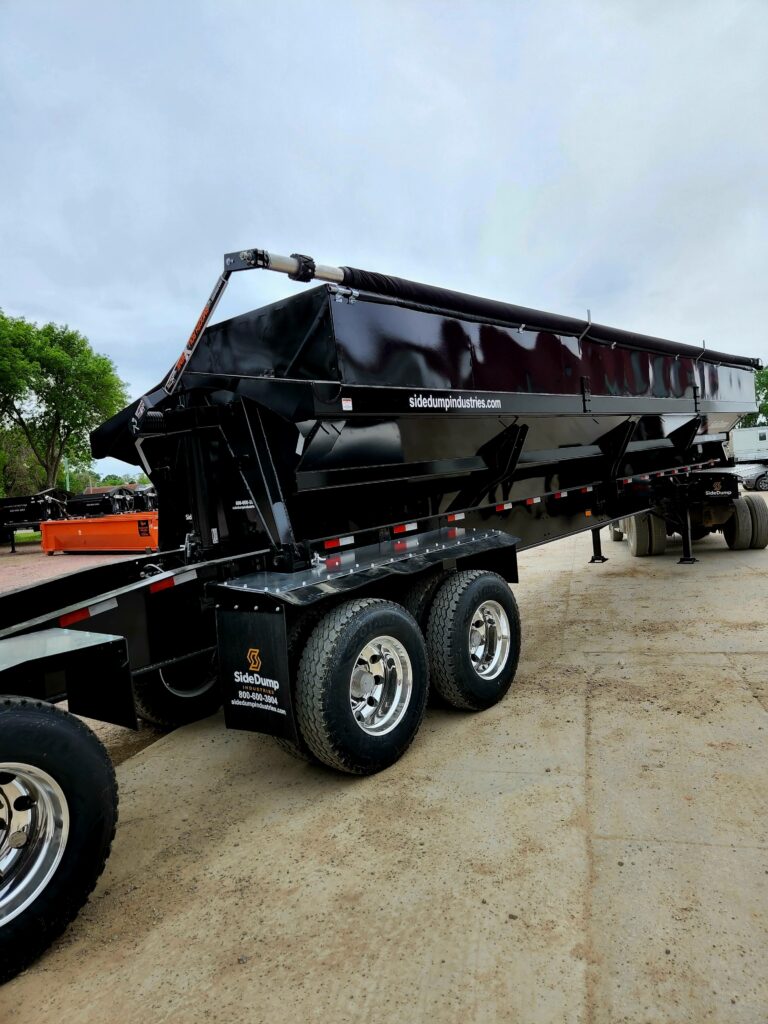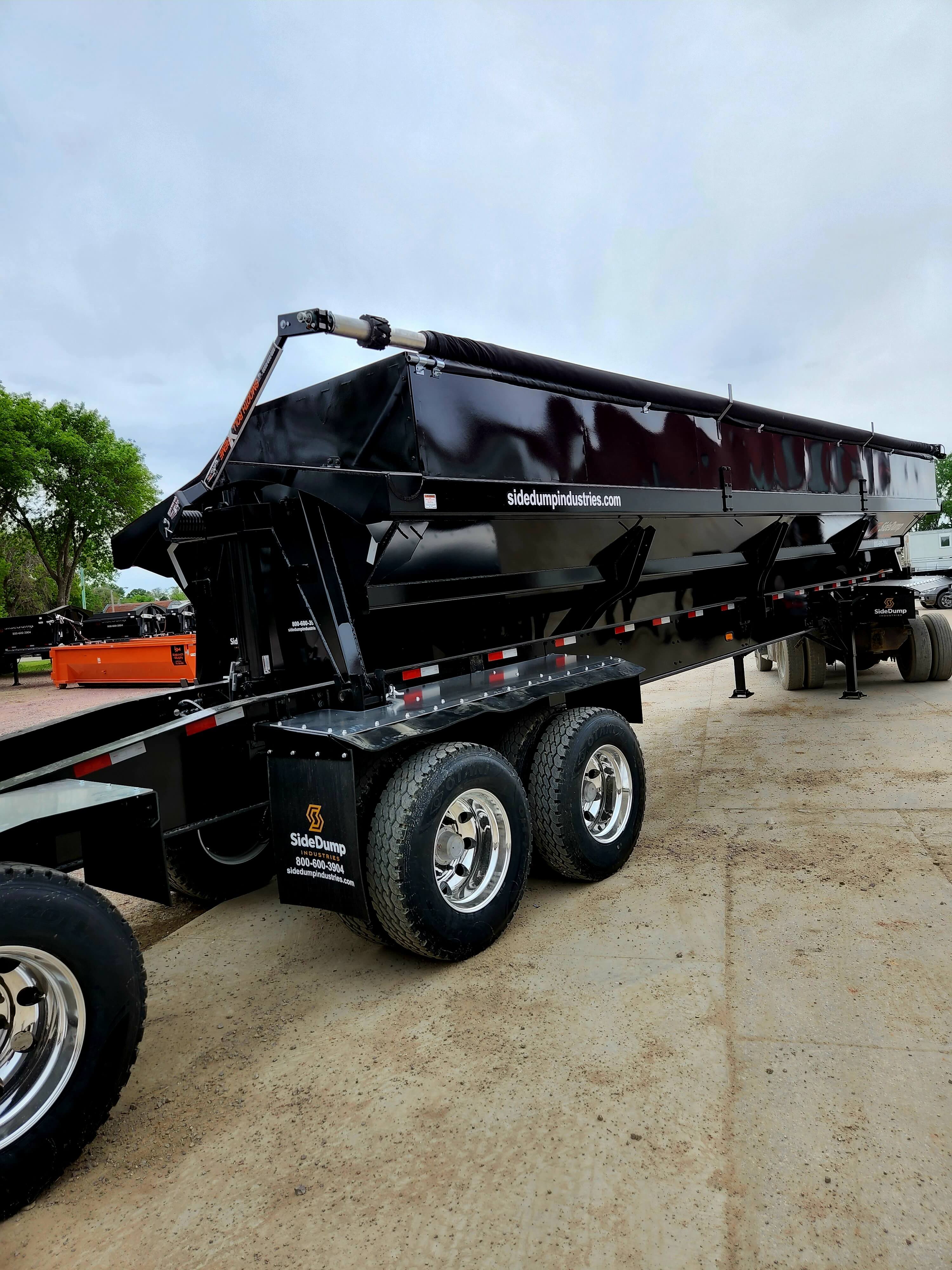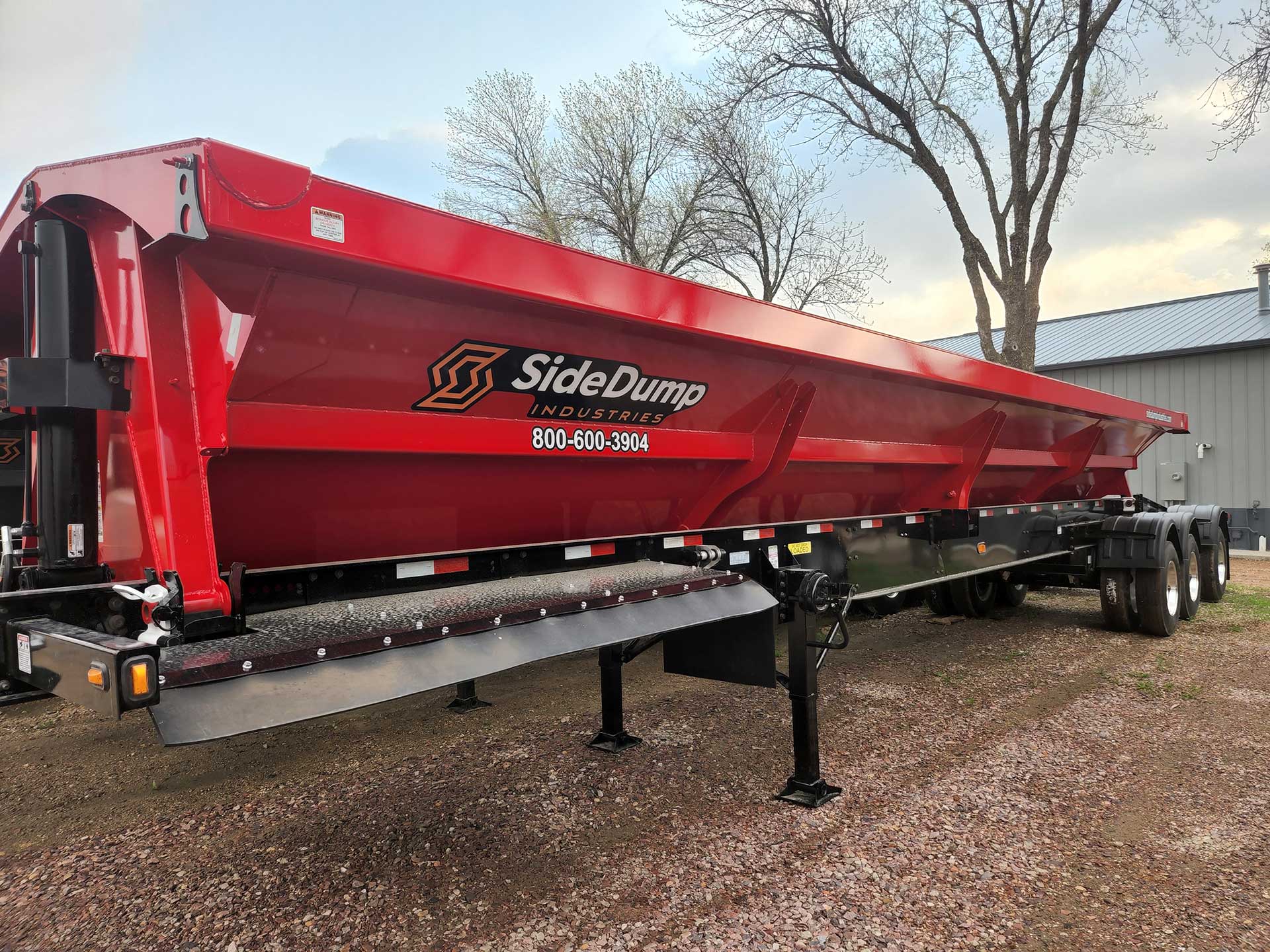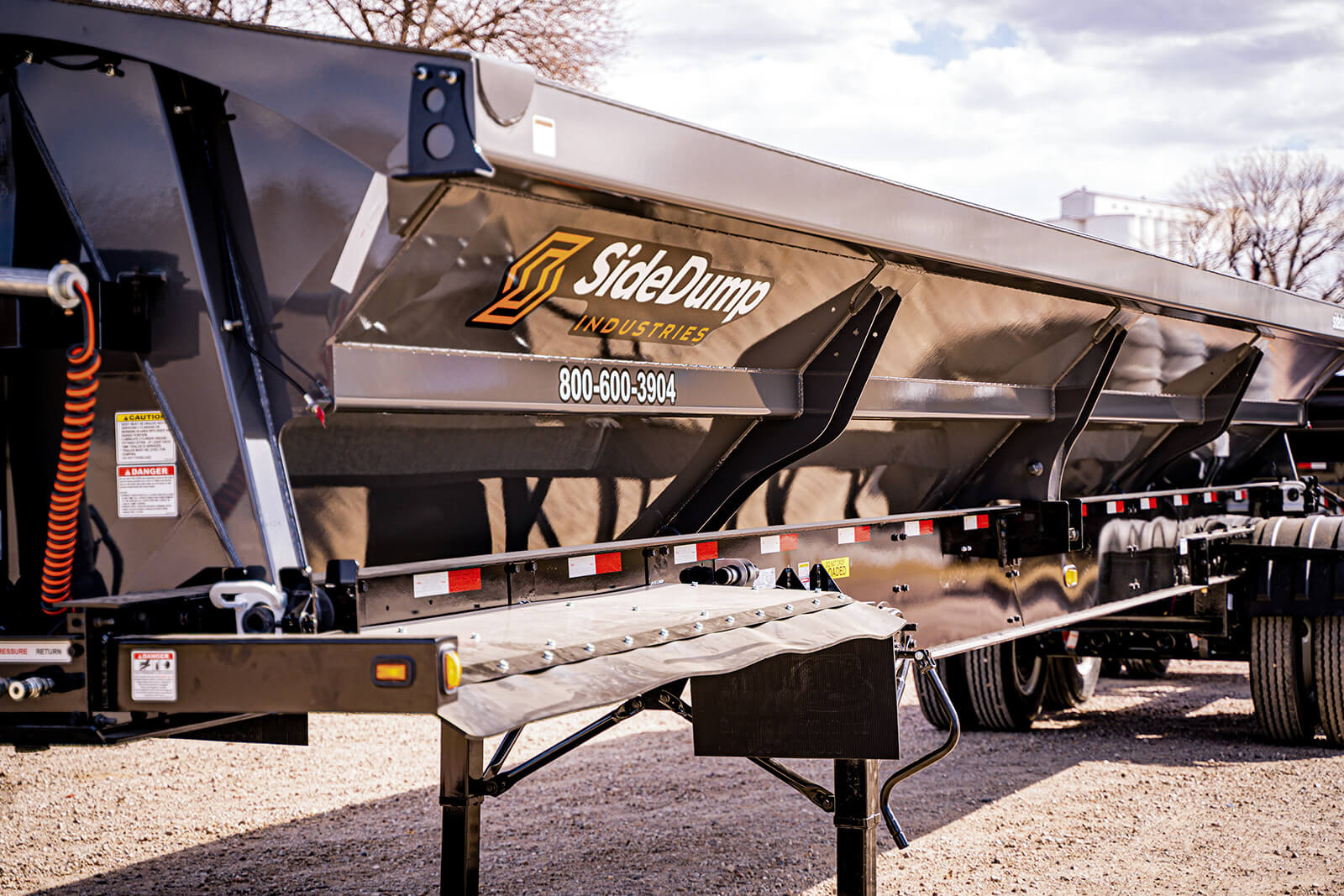
What are tarp systems? How do they work?
Importance of Covering the Load When in Transit
Most motorists concentrate on the hazards in front of them. However, for truck drivers pulling heavy loads, the hazard is usually the load they carry behind. Securing loads is vital for vehicle operators and other road users. Pulling a heavy uncovered load with considerable height creates a dangerous situation for everyone and can have serious consequences, including loss of lives.
At Side Dump Industries, we’re always working on ensuring that your dump truck has plenty of safety features to load, transport, and unload safely. To cover your load safely during transit, you should consider investing in tarp systems.
What are Tarp Systems?
Tarp systems cover large, irregular-sized loads and protect manufacturing or machine equipment from weather and road vibration. Most tarps are 24 inches wide and 30 inches long, enough to cover a large machine with one tarp. Some come with end flaps, while others don’t. Tarp systems for dump trucks may feature aluminum construction and gear motor technology to contain and protect your load. The system is easy to install and can save time and money at the end of the day.
How does the Tarp system work?
On the importance of covering the load when in transit with regard to the safety of other vehicles on the road, one of the biggest mistakes is forgetting to uncover the load before dumping it.
This leads to damaged tarp systems and the possibility of upsetting the entire trailer. This error will put the trailer out of use either due to tarp damage making it unusable, or trailer damage because of an upset trailer. A tarp safety switch can be installed on the trailer that will not allow the tub to dump if the tarp is unrolled, covering the load.
This is done by installing a solenoid valve in the dump side of the hydraulic system. This valve is tied to a position sensor that will sense where the tarp arm is, either allowing the fluid to flow if the tarp is open or not allowing flow if the tarp is closed. This system needs 12V to operate, which is wired into the AUX plug and can be installed on new and older trailers. The system is easy to install and can save time and money at the end of the day.
How to minimize accidents when loading and unloading
While every company has its own regulations and steps for loading, there are a few essential tips you can use to reduce accidents. They include:
Choose the right vehicle
Always work with the right vehicle; if you’re going to dump materials, use a dump trailer. If you’re carrying a large load, make sure the trailer is designed to handle such weight. Remember, overloading will not only cost lives but also get you into trouble with the law.
Position the load correctly
Ensure your load is evenly spread to avoid overworking the axles and tires, compromising the vehicle’s stability, braking, and acceleration. It’s also dangerous to dump unevenly spread loads.
Use restraint equipment
Your team should use reliable restraint equipment for load-securing operations. It should be solid enough to prevent movement during transit, even in the event of emergency braking.
Drive safely
Apply defensive driving during transit, and use less busy roads with enough room to stop and check loads.
If you’re looking for a safe, reliable, and efficient dump truck, feel free to contact your local side dump dealer near you.
If you’re looking for a safe, reliable, and efficient dump truck, feel free to contact your local side dump dealer near you.


